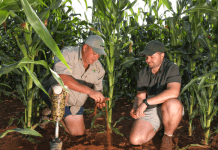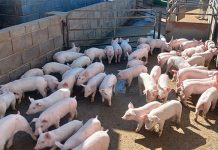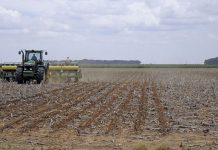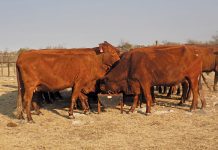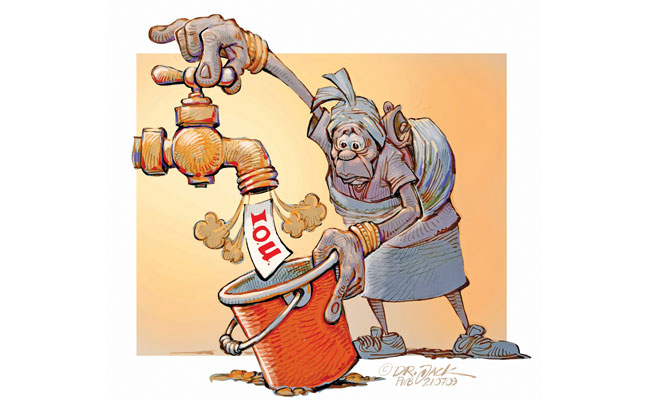
At least 1,5 billion people have been directly affected by drought this century, and the economic cost has been estimated at US$124 billion [about R1,76 trillion].
The true cost is likely to be many times higher, however, as estimates do not include much of the effect of droughts in developing countries.
According to ‘Global Assessment Report on Disaster Risk Reduction: Special Report on Drought 2021’, most of the world will be living with water stress within the next few years. Demand will outstrip supply during certain periods, and there will be land degradation and declines in the yield of major crops.
The risks that drought poses to communities, ecosystems and economies are much larger and more profound than can be measured. Moreover, climate-change projections suggest that many areas will experience droughts more frequently and of greater severity.
This makes key issues, such as how well society is coping with drought and the availability of tools to reduce the cost of drought, all the more pressing.
Failure of the system
Drought is not aridity or water scarcity; it is a failure of the system that drives the hydrological balance. This can include reduced rainfall over a certain period, inadequate timing or ineffectiveness of precipitation and/or a negative water balance due to an increased atmospheric water demand following high temperatures or strong winds.
Human actions interact with drought hazards to either exacerbate or limit the degree of risk and the severity of effects. While land and water management can mitigate the effects of drought to a certain extent, it can also increase exposure and vulnerability and therefore future risks.
Growing demand for water and extraction from natural and man-made reservoirs can further increase vulnerability; however, some forms of conservative land-use practices can reduce soil moisture loss.
The onset of drought is usually slow, and a drought is therefore difficult to measure until a certain threshold is reached. In addition, the end can be staggered. Nonetheless, defining discrete drought events is important for quantifying loss and damage from extreme events and for policy implementation.
Climate change has already led to more intense and longer droughts in some regions
of the world, notably southern Europe and west Africa. Projections indicate that droughts
will be more frequent and severe over wide parts of the world, in particular most of Africa, central Asia, southern Australia, Mexico and the US.
The extent and severity of these droughts will largely depend on the magnitude of the temperature rise. (Other regions will become wetter with less frequent, less intense or shorter meteorological droughts.)
When inadequately managed, drought is one of the causes of desertification and land degradation, increasing fragility of ecosystems and social instability, especially in rural communities.
Drought directly effects agricultural production, public water supply, energy production, water-borne transportation, tourism, human health, biodiversity and natural ecosystems.
If these effects are sufficiently extensive in the world’s breadbaskets, drought can, and has, led to food prices rising globally and a range of significant cascading indirect effects. These move quickly through the economic system, affecting regions far from where the drought originated, and can linger long after the drought has ended.
Thus, drought may result in temporary or permanent unemployment, business interruption, disrupted international trade, loss of income, disease due to poor water quality, food insecurity, malnutrition, starvation and widespread famine.
In turn, this can trigger internal and cross-border migration, social unrest and conflict in extreme cases.
Global estimates of costs offer only partial accounts and are significant under-estimates; case studies suggest multiplicative effects many times these costs.
Estimates of some of the direct costs include annual losses due to drought at approximately US$6,4 billion [R91 billion] per annum in the US, and some €9 billion [R127,9 billion] per annum in the EU. The effect of severe droughts on India’s GDP is estimated at 2% to 5%.
There is clear disproportionate vulnerability of poor and marginalised populations in many case studies, especially in Africa, where the cost of drought is measured in terms of lives, livelihoods and impoverishment.
Across the African case studies presented in the report, a hierarchy of vulnerability is clear: pastoralists, dryland crop farmers, irrigation farmers and then the broader elements of the community and economy. In other words, there are large numbers of people in fragile communities dependent on highly drought-sensitive activities such as agriculture and livestock management, and which are further exacerbated by gender inequalities.
Adaptation to drought
Local adaptations to drought are widely reported; these are essentially examples of adaptation from the ground up and are sometimes supported by government programmes.
Examples include adapting crop varieties, the mix of enterprises, planting dates, planting densities, and irrigation strategies.
In Africa, adaptation strategies based on traditional knowledge (for example, West African water harvesting) are increasing in importance. But many of these local adaptations are not sufficiently connected to knowledge of the likelihood or current status of drought.
While many case studies emphasise the need for empowered farmers and communities, as well as preparedness linked to adequate early warning and monitoring, success is dependent on the effectiveness of policy support. The latter may include drought funds, rebates, tax measures and the like.
The use of risk transfer and related financial instruments is rare due to a lack of knowledge or research into financial risk products, poor choice within expensive financial products and a small supplier pool and thus limited competition.
Drought response policy disconnects are common among governments. While good examples exist in some parts of the world, many mechanisms and approaches have been overwhelmed by the length and complexity of severe droughts, and measures are currently in a reactive phase only.
Almost all case studies presented in the report identify the need for national drought policies to support drought risk reduction and avoid prevailing reactive models; in other words, shifting from dealing with drought effects to getting ahead of the curve in order to address underlying risk drivers and prevent and manage drought risk.
A new response
The report mentions options to be explored and ways to navigate this complex, damaging risk. The analysis of drought and the experiences explored in the case studies show that there are connected concerns requiring a transformation in approaches to managing drought risk.
Successful integrated management requires a shift in governance from reaction and bailout to risk reduction and resilience, in part based on improved knowledge of the climate mechanisms controlling the onset and termination of drought periods and level of vulnerability of exposed communities, industries and ecosystems.
The report argues for a more systemic approach to drought risk built around strengthened observation and learning where intervention is feasible and effective, all within adaptive and drought risk management policies, plans and actions.
This requires new forms of governance that are designed for the systemic nature of the risk and can respond to the extraordinary complexity of the drought experience.
The views expressed in our weekly opinion piece do not necessarily reflect those of Farmer’s Weekly.
This article is an edited excerpt from the ‘Global Assessment Report on Disaster Risk Reduction: Special Report on Drought 2021’ by the United Nations Office for Disaster Risk Reduction.


